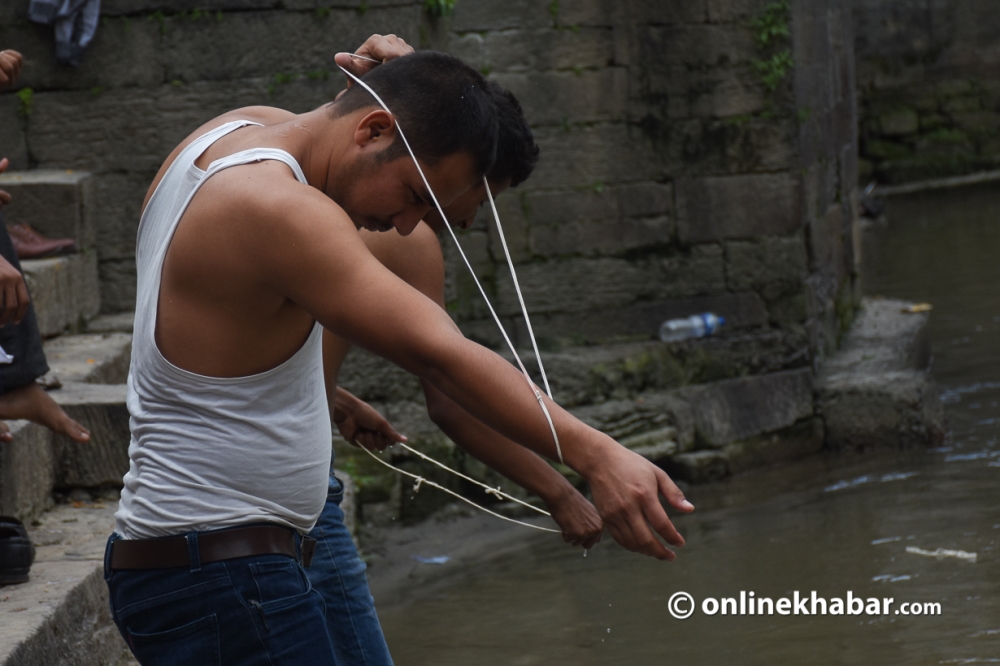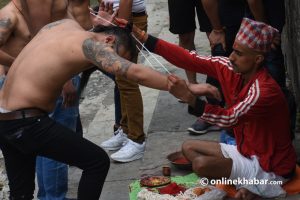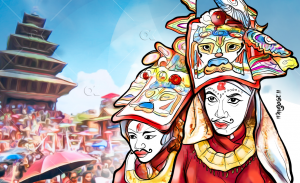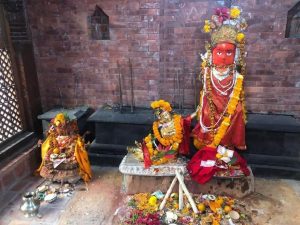 Almost all Hindus across Nepal celebrate the Janai Purnima festival on the full moon day of Shrawan every year, yet many of them do not know the essence of ‘janai’, the sacred thread that gave the festival its name.
Almost all Hindus across Nepal celebrate the Janai Purnima festival on the full moon day of Shrawan every year, yet many of them do not know the essence of ‘janai’, the sacred thread that gave the festival its name.
So, here we have a detail of what a janai is and why it is important in the Hindu culture.
What is a janai?
Janai, often translated as a sacred thread, is a thread that has a high religious and cultural significance among the Hindu boys and men.
 According to religious texts and people who have studied it, men from Bhramin, Kshetriya and Vaishya varna (hierarchical group) receive the honour of wearing a janai during a ritual called Bratabandha (Upanayana).
According to religious texts and people who have studied it, men from Bhramin, Kshetriya and Vaishya varna (hierarchical group) receive the honour of wearing a janai during a ritual called Bratabandha (Upanayana).
Rishi Ram Pokharel, a noted Sanskrit literature scholar of the country, says this thread is normally worn diagonally, from the left shoulder to right waist, crossing the chest. In Sanskirt, a janai is called ‘Yagyopabita’. Professor Pokharel explains, “Yagya refers to any kind of worship, offering, devotion, or oblation. And, ‘Upabita’ means something that has to be worn while performing yagyas. Such a thread that is made holy by chanting Vedic mantras.” It is believed that these mantras established several Hindu gods and goddesses in the threads.
As per Pokharel, in the Satya Yug and Treta Yug, the janai used to be of gold and during the Dwapar Yug, it used to be of silver. Coming to the final Kali Yug, it is now made up of cotton. The thread for a Brahmin consists of six thinner strands whereas, for Kshetriyas, it is three. However, some add three additional strands as a substitute to the uttariya, an upper garment, that is considered mandatory for Hindu men while performing any yagyas.
Why is it worn?
 It is believed that after adorning a janai, all the gods and goddesses enter and stay in their body, mind, and soul and make their life holy and meaningful.
It is believed that after adorning a janai, all the gods and goddesses enter and stay in their body, mind, and soul and make their life holy and meaningful.
As the janai is given to them during the Bratabandha, it constantly reminds the wearer that they are bounded by some vows and rules, making sure that they always follow their conduct and lessons taught by their gurus.
It is also believed that this thread grants knowledge, power, prosperity, and wisdom to the bearer. Hence, whoever adorns a janai, he is always expected to be dutiful, loyal, respectful, and truthful and be in discipline.
Not only this, but it is also said the janai grants the motivation to the wearer for performing good deeds and to be in pure character. Wearing a janai is believed to grant longevity and conspicuousness. Likewise, it is also believed that adoring the janai will protect the holder against negative thoughts and energy throughout his life.
Pokharel explains whereas a janai has three, six or nine strands (as described above), a strand has three smallest units, let’s say fibres. Therefore, a basic unit of the janai has nine fibres. “In every fibre, there lie all Hindu deities. Omkar that symbolises all the god and goddesses and the divine power in the first, Agni (the Fire God) in the second, Naag (the Serpent God) also considered the preserver of water resources in the third, Soma (the Moon) considered as of flora in the fourth, Pitri (forefathers) who are the guides and protectors in the fifth, Prajapati refering to the creator of the world in the sixth, Vayu or Maruta (the Air God) in the seventh, Surya (the Sun) in the eighth, and Vishwadev in the ninth fibre,” Pokharel says, “Therefore, there is a religious belief that these gods and goddesses living in the purified janai bestow the wearer the power and strength that lies within the gods.”
“Also, each of the three fibres is threefold and made one strand that counts the total of three strands, symbolising the holy Trimurti: Brahma (the creator), Vishnu (the preserver) and Maheshwor (the destroyer).” Some even consider these three strands are symbolic of body, speech, and mind, and believe the one who adorns this holy thread gains complete control over their body, speech, and mind.
It is not only the Janai Purnima when the wearers change their janai. In the Hindu scriptures, it is mentioned that the janai should be changed in the interval of four months, before doing any yagya, or after the completion of an ‘impure’ period caused by birth or death in the close family.
In the scared Smriti (Puranas), Brahma is credited for the creation of this thread; that is why it got its another name, called Brahmasutra, according to Pokharel.
Exclusive to high-caste men?
 Though the practice of wearing a janai is limited to Brahmins, Kshetriyas, and Vaishyas today, an expert on religion and culture, Basudev Krishna Shastri, briefs, “Everyone, including all the men and women, has the right to this. Only after adorning the janai, one is considered eligible to perform all 16 rites of human life (sanskars).”
Though the practice of wearing a janai is limited to Brahmins, Kshetriyas, and Vaishyas today, an expert on religion and culture, Basudev Krishna Shastri, briefs, “Everyone, including all the men and women, has the right to this. Only after adorning the janai, one is considered eligible to perform all 16 rites of human life (sanskars).”
He claims all people including men and women of all castes had the tradition of wearing a janai in the past. To justify, Shastri explains, “Till date, while performing any yagyas or pujas be it Durga Puja or Swasthani Puja or Laxmi Puja, we (Hindu) offer yagyopabita (janai) to the goddesses as well. Symbolically offering a janai to the female deities during a yagya connotes that they adorn the janai.”
Narrating one of the sections of a Hindi book, Vedic Vangmay mein Nari (meaning Women in Vedic Literature) by Dr Sushma Shukla, Shastri briefs, “In the Sutra Sahitya (Sutra Literature), Griha Sutra (text that includes information regarding Vedic domestic rituals) and in other scriptures as well, it is mentioned that a wife should wear a janai while performing any yagyas. Also, it reads those women who adorn a yagyopabita are reverent and beautiful.” For him, potey that modern women wear is also a symbol of the janai.
Later, this practice faded away coming to today’s world as people found it very tough to be in a strict discipline that one has to follow after wearing a janai, Shastri claims.
Gradually, people nowadays even Brahmin and Kshetriya men stopped adorning the janai as one is bounded by vow and rules after wearing it and people find it very difficult and impractical to do so.


























